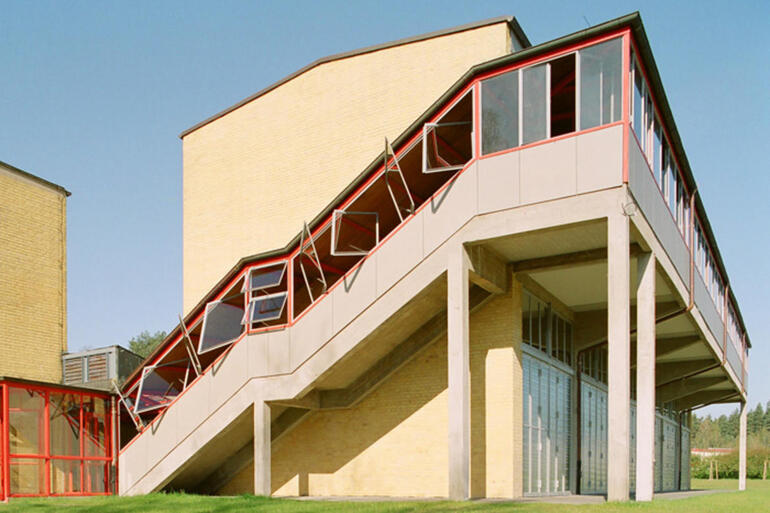
2008
ADGB Trade Union School
Awarded to Brenne Gesellschaft von Architekten mbH for the restoration of the ADGB Trade Union School (1928–1930), designed by Hannes Meyer and Hans Wittwer in Bernau, Germany.
The ADGB Trade Union School in Bernau, Germany, is a highly significant monument that reflects the design ideals of functionalist architecture from the classical age of modern architecture. The legacy of the Bauhaus is present in the innovative use of materials, the building’s exposed concrete, and the external glass corridor. After decades of neglect, the province of Brandenburg, the owner of the complex, decided to restore the building as to use as a trade school and give it new life as a working building.
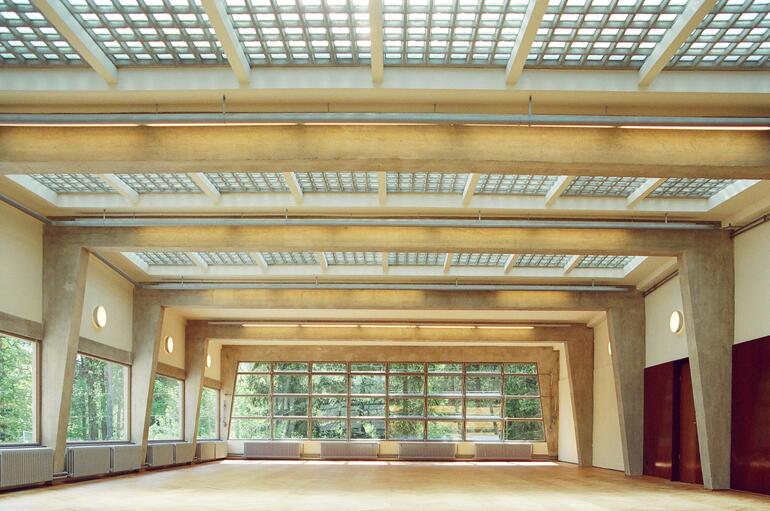
ADGB Trade Union School
The restoration by Brenne Gesellschaft von Architekten mbH, under the patronage of Handwerkskammer Berlin, overcame the difficulties of a complex site, neglect, political turmoil, and limited financial resources. It demonstrated the unique challenges of conserving Modern architecture and the influential role that it continues to play in our architectural heritage.
In 2017 the ADGB Trade Union School was added to the UNESCO World Heritage Site "the Bauhaus and its Sites in Weimar, Dessau and Bernau."
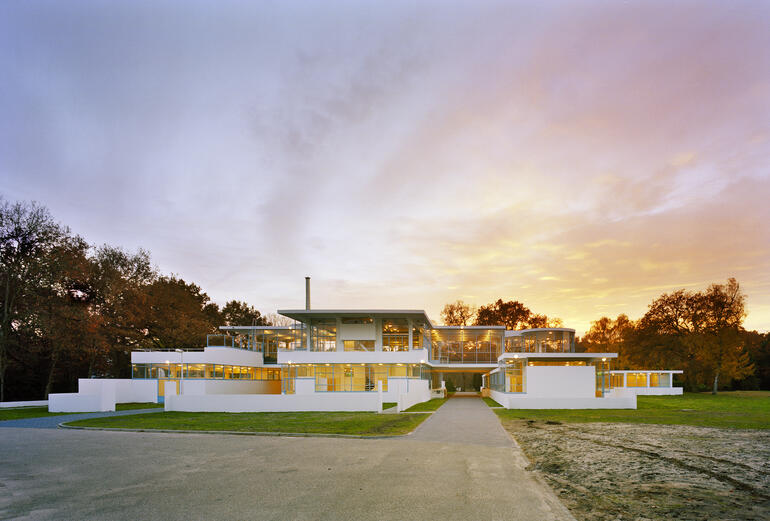
2010
Zonnestraal Sanatorium
Awarded to Bierman Henket architecten and Wessel de Jonge architecten for the restoration of the Zonnestraal Sanatorium (1928–1931), designed by Johannes Duiker and Bernard Bijvoet in Hilversum, Netherlands.
The Zonnestraal Sanatorium, an iconic modern building in Hilversum, the Netherlands, was built to have a short life. Its original design, completed in 1931, was based on the belief that harboring tuberculosis patients would become outdated with the invention of new cures. This proved to be true. Zonnestraal was celebrated as a significant monument in the early years of the modern movement even while it was under construction, but fell into disuse and disrepair.
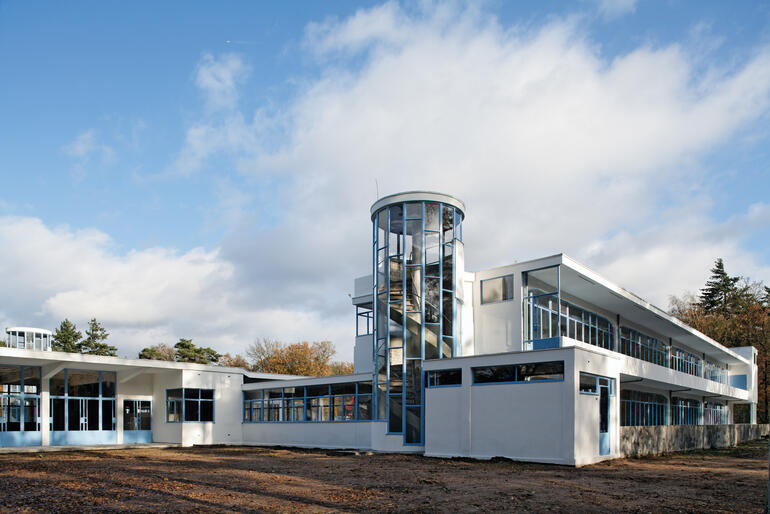
Zonnestraal Sanatorium
In 1982, concerned with the physical decline of a growing body of modern architecture in the Netherlands, the Dutch government convened leading architects to address this problem, with Zonnestraal as the template. The study led to a conservation program for Zonnestraal, and to the creation of an international movement to save great works of modern architecture: DOCOMOMO.
Over years of exhaustive research and painstaking conservation and reconstruction by Henket and Wessel de Jonge the sanatorium has been restored to its original brilliance and re-purposed for contemporary use as a multi-purpose health facility. Eighty years after completion, the architects’ commitment to restoring Zonnestraal furthers its legacy as an icon of the modern movement.
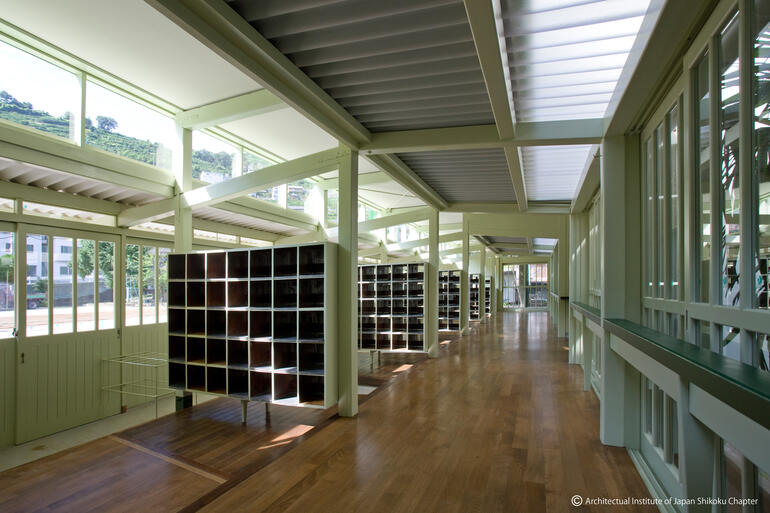
2012
Hizuchi Elementary School
Awarded to the Architectural Consortium for Hizuchi Elementary School SUZUKI Hiroyuki, MAGATA Kiyotada, HANADA Yoshiaki, WADA Kouichi, TAKECHI Kazutomi, KOSHIHARA Mikio, and Mayor of Yawatahama City, OHSHIRO Ichiro for the restoration of Hizuchi Elementary School, designed by MATSUMURA Masatsune 1956–1958 in Yawatahama City, Ehime Prefecture, Japan
When Hizuchi Elementary School was built in 1958, the architectural community of Japan was deeply impressed by the fine, modern functionalist design, but surprised by its location—a rural farming community on Shikoku Island. Hizuchi incorporated the most advanced design in the country and reflected emerging ideas about Modern architecture in post-war Japan.
During the restoration by the Architectural Consortium for Hizuchi Elementary School between 2006 and 2009, the community was engaged, came to re-appreciate, and eventually saved the school following extensive damage in a 2004 typhoon. It is a living piece of the community, where schoolchildren are learning in and engaged with a finely designed building that brings the surrounding landscape of the Kikigawa River into the inner spaces of the school.
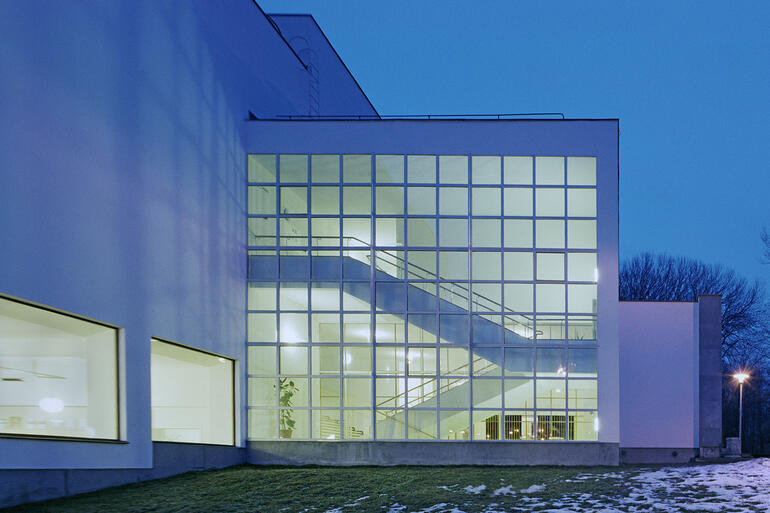
2014
Viipuri Library
Awarded to the Finnish Committee for the Restoration of Viipuri Library for The Central City Alvar Aalto Library, Vyborg, designed and completed by Alvar Aalto from 1927 to 1935 in Vyborg, Russia.
An icon of twentieth-century architecture, Viipuri Library is one of Alvar Aalto’s most important buildings from the years where he was adventurously exploring a new modernist vocabulary. Despite early and widespread acclaim for the library, its survival was never assured. Access to the building was limited, and even the preservation state was uncertain due to war, unstable political relations, and changes in international borders that the led to the former Finnish city of Viipuri becoming Vyborg, part of the expanded territory of the USSR.

Viipuri Library
After the fall of the Soviet Union in 1991, the library restoration began in earnest, led by Finnish architects in conjunction with Russian colleagues and an array of international supporters. The library was included on the World Monuments Watch in 2000 and 2002 in support of these efforts.
The Finnish Committee for the Restoration of Viipuri Library masterfully ensured the survival and revival of Aalto’s masterpiece, overcoming decades of inappropriate alterations and lack of financial resources, restoring it to its original design as a municipal library. The conservation of Viipuri Library advanced the field of modern heritage preservation and showed that it is possible to save significant modern architecture that remains at risk.
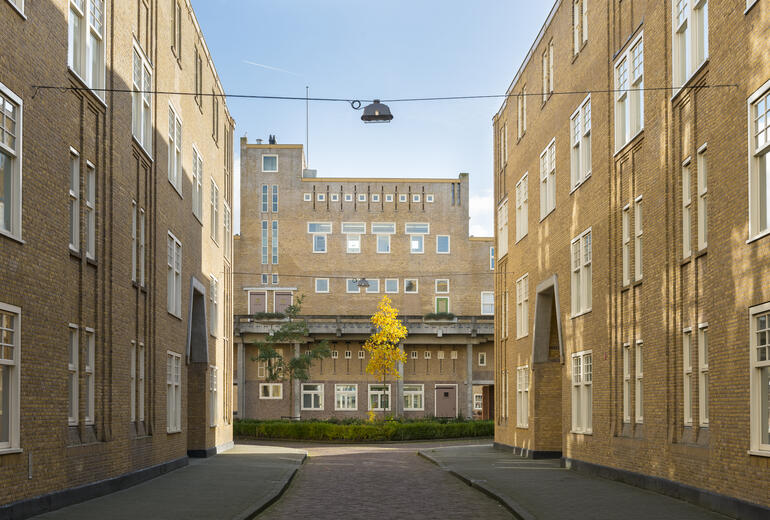
2016
Justus van Effen complex
Awarded to Molenaar & Co. architecten, Hebly Theunissen architecten, and Michael van Gessel landscapes for the preservation of the Justus van Effen complex, designed and built by Michiel Brinkman 1919-1922 in Rotterdam, Netherlands.
The Justus van Effen complex is a remarkable example of early Modernism applied to social housing. The complex presented by far the most radical response to the pressing post WWI housing shortage in the Netherlands.
Molenaar and Co. architecten, Hebly Theunissen architecten and Michael van Gessel landscapes were able to rise to the challenge of conserving public housing to meet current needs, unifying previous interventions and incorporating new energy saving elements. The Justus van Effen Complex reminds us that housing, an ongoing global issue, can also be a significant architectural and civic monument.
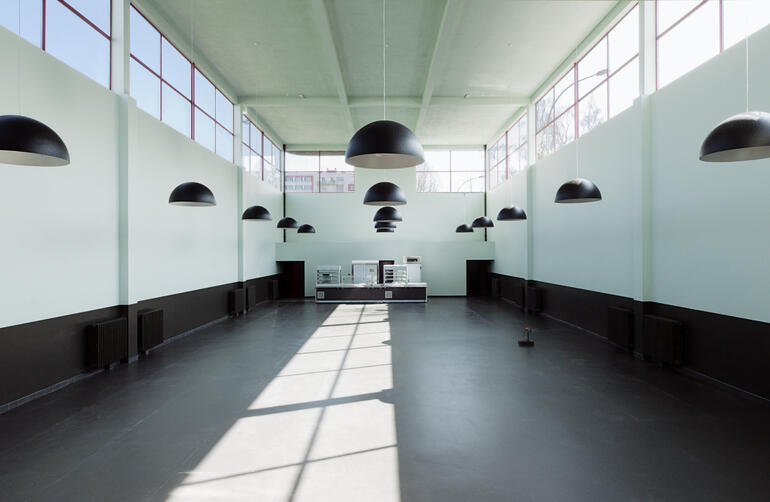
2018
Karl Marx School
Awarded to Agence Christiane Schmuckle-Mollard for the preservation of Karl Marx School, designed and built by André Lurçat in 1933 in Villejuif, France.
Designed and constructed by French architect André Lurçat in a communist Paris suburb, the Karl Marx School was celebrated and described as “the most beautiful school in France” upon its inauguration in 1933. Designed according to functionalist principles that emphasize simplicity of form, Lurçat’s design draws attention to them by maximizing natural light. By the 1990s, though continuously occupied by schools, the poorly maintained complex was in danger of being lost.
In 1996, the Karl Marx School was listed as a National Historical Monument in France, bringing new resources for a restoration. Under the guidance of Agence Christiane Schmuckle-Mollard restoration maintained the interconnected interior and exterior spaces and recovered the lost color scheme of the building. The school ensemble was updated to new regulations and transformed into a twenty-first century center for education to continue being an object of pride for the locals and proving the social relevance of architecture.
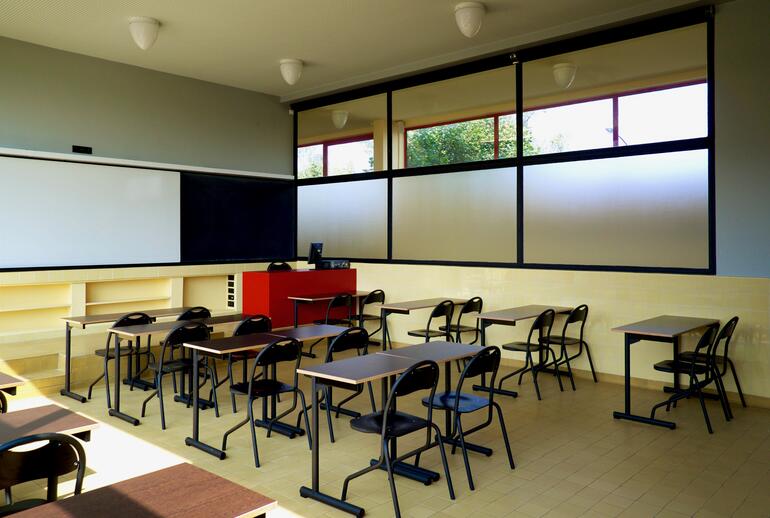
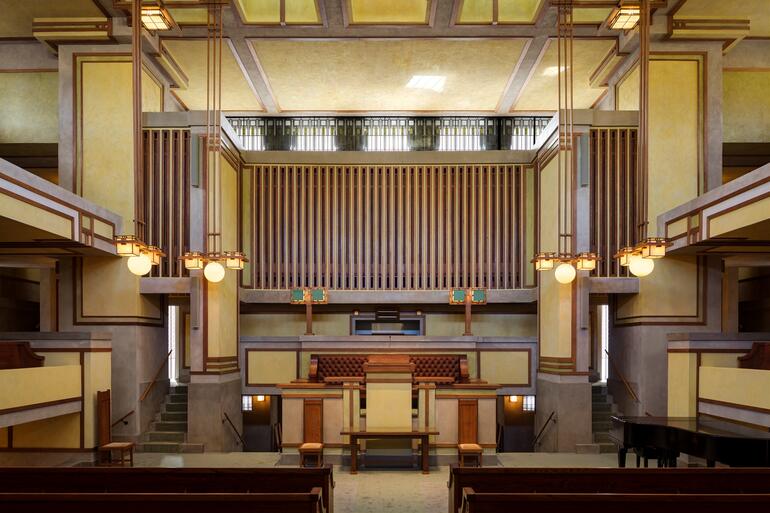
2018 Special Mention
Unity Temple
To Harboe Architects, PC for their project at Unity Temple designed by Frank Lloyd Wright and completed in 1908 in Oak Park, Illinois.
Originally completed in 1908, Unity Temple is one of Frank Lloyd Wright’s greatest works and one of the most important early works of modern architecture anywhere in the world. As with many religious structures, the building suffered from decades of deferred maintenance.
Following previous but partial restoration projects in the 1970s and 1990s, a major preservation effort began at the site in 2013. Harboe Architects, PC spent nearly a year conducting in‐depth research, and two years physically restoring and modernizing the structure. Work included extensive structural concrete repairs, installation of new roof systems, including two large new skylights, and restoration of all interior plaster, paint, wood finishes, art glass windows, and light fixtures. This sensitive restoration ensures the survival of one of the seminal works modern architecture.
WMF launched the biennial World Monuments Fund/Knoll Modernism Prize with founding sponsor Knoll in 2008 to recognize the individuals and organizations that preserve our modern built heritage through pioneering architectural and design solutions.
Do you know of a project, completed in the last ten years, to conserve or restore a modern site facing challenges or threats?

